Mamoun Alazab
Metaverse for Healthcare: A Survey on Potential Applications, Challenges and Future Directions
Sep 09, 2022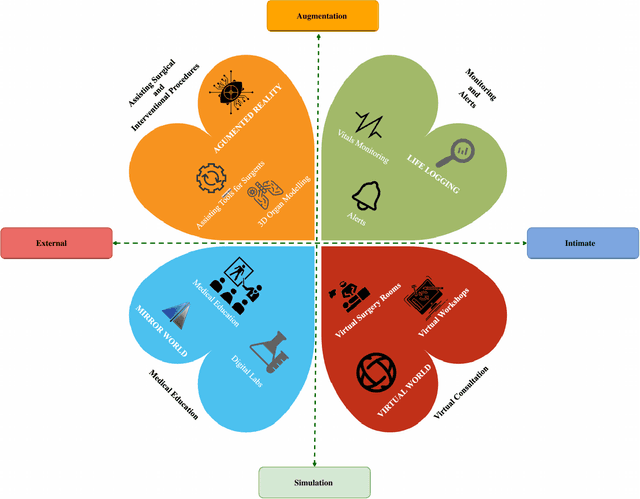

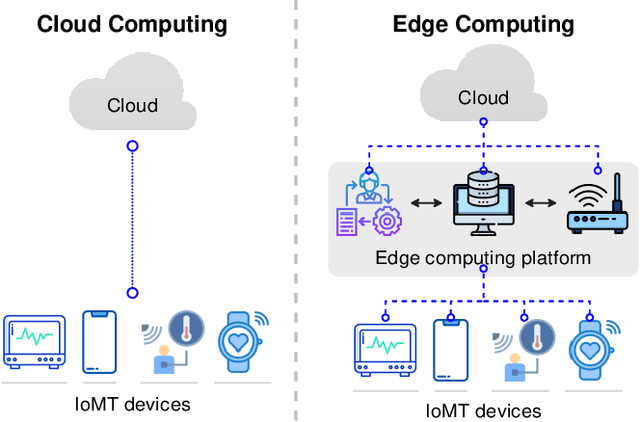
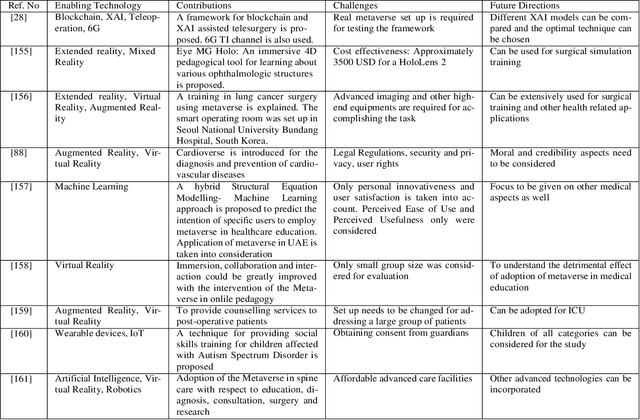
Abstract:The rapid progress in digitalization and automation have led to an accelerated growth in healthcare, generating novel models that are creating new channels for rendering treatment with reduced cost. The Metaverse is an emerging technology in the digital space which has huge potential in healthcare, enabling realistic experiences to the patients as well as the medical practitioners. The Metaverse is a confluence of multiple enabling technologies such as artificial intelligence, virtual reality, augmented reality, internet of medical devices, robotics, quantum computing, etc. through which new directions for providing quality healthcare treatment and services can be explored. The amalgamation of these technologies ensures immersive, intimate and personalized patient care. It also provides adaptive intelligent solutions that eliminates the barriers between healthcare providers and receivers. This article provides a comprehensive review of the Metaverse for healthcare, emphasizing on the state of the art, the enabling technologies for adopting the Metaverse for healthcare, the potential applications and the related projects. The issues in the adaptation of the Metaverse for healthcare applications are also identified and the plausible solutions are highlighted as part of future research directions.
Federated Learning for IoUT: Concepts, Applications, Challenges and Opportunities
Jul 28, 2022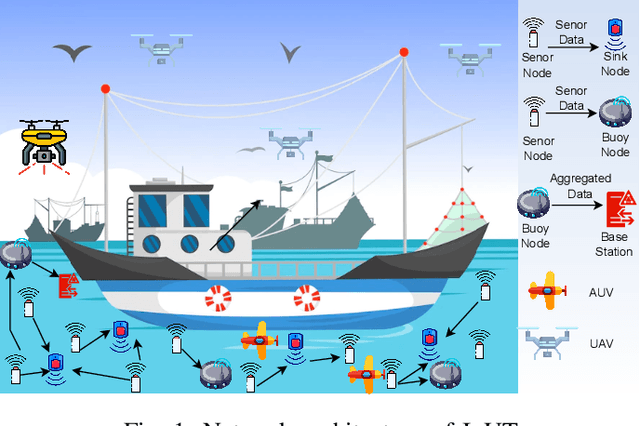
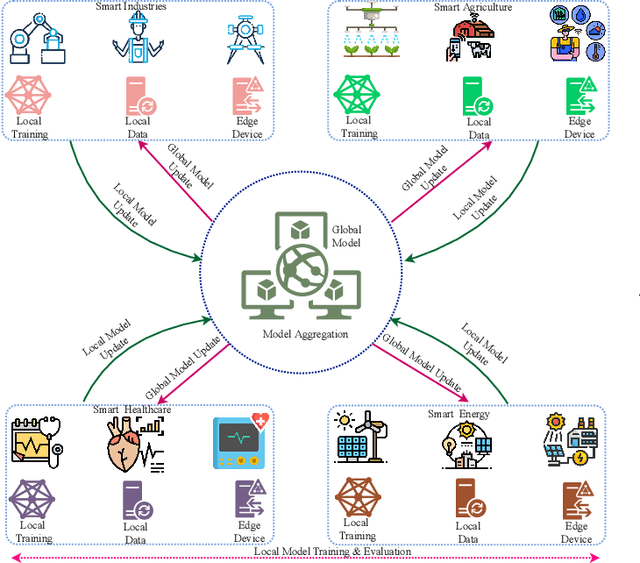
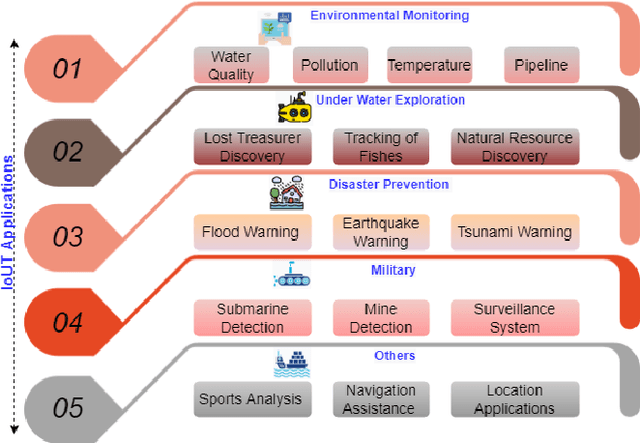

Abstract:Internet of Underwater Things (IoUT) have gained rapid momentum over the past decade with applications spanning from environmental monitoring and exploration, defence applications, etc. The traditional IoUT systems use machine learning (ML) approaches which cater the needs of reliability, efficiency and timeliness. However, an extensive review of the various studies conducted highlight the significance of data privacy and security in IoUT frameworks as a predominant factor in achieving desired outcomes in mission critical applications. Federated learning (FL) is a secured, decentralized framework which is a recent development in machine learning, that will help in fulfilling the challenges faced by conventional ML approaches in IoUT. This paper presents an overview of the various applications of FL in IoUT, its challenges, open issues and indicates direction of future research prospects.
XAI for Cybersecurity: State of the Art, Challenges, Open Issues and Future Directions
Jun 03, 2022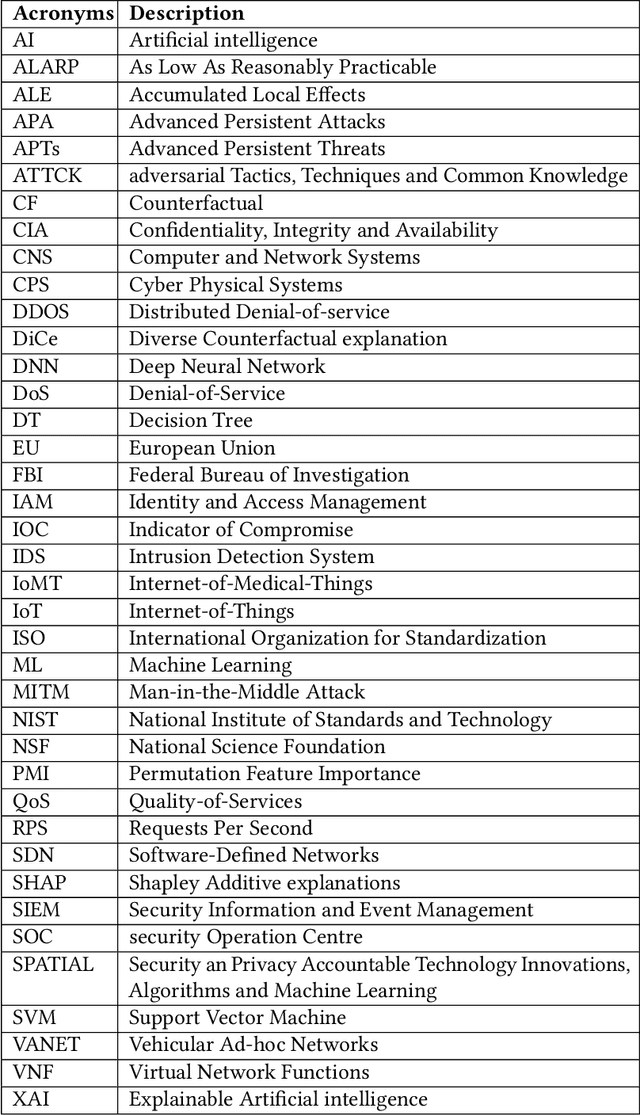
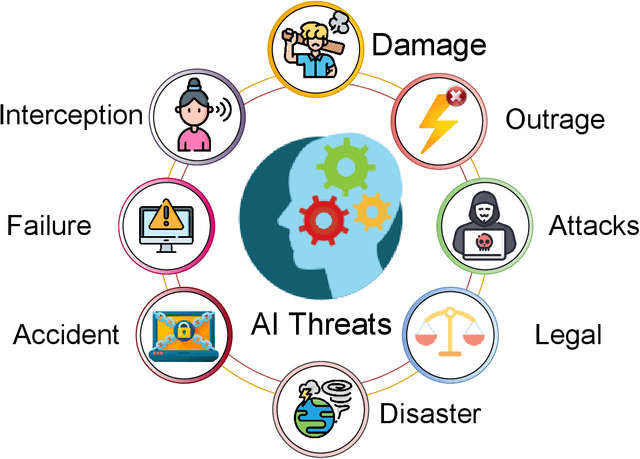
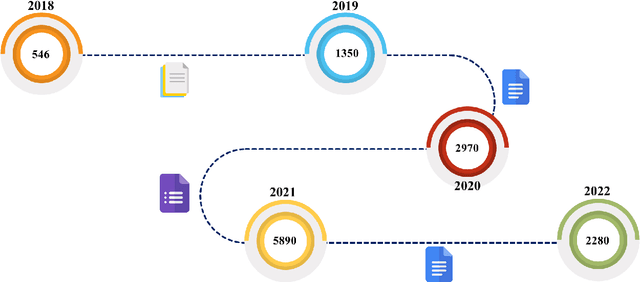
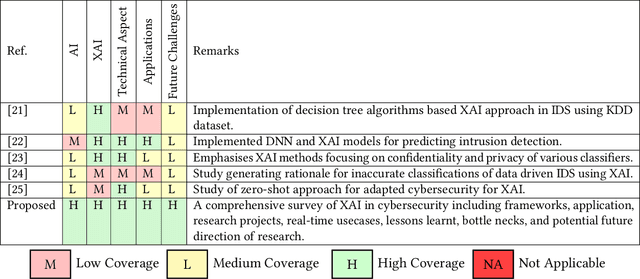
Abstract:In the past few years, artificial intelligence (AI) techniques have been implemented in almost all verticals of human life. However, the results generated from the AI models often lag explainability. AI models often appear as a blackbox wherein developers are unable to explain or trace back the reasoning behind a specific decision. Explainable AI (XAI) is a rapid growing field of research which helps to extract information and also visualize the results generated with an optimum transparency. The present study provides and extensive review of the use of XAI in cybersecurity. Cybersecurity enables protection of systems, networks and programs from different types of attacks. The use of XAI has immense potential in predicting such attacks. The paper provides a brief overview on cybersecurity and the various forms of attack. Then the use of traditional AI techniques and its associated challenges are discussed which opens its doors towards use of XAI in various applications. The XAI implementations of various research projects and industry are also presented. Finally, the lessons learnt from these applications are highlighted which act as a guide for future scope of research.
Genetic CFL: Optimization of Hyper-Parameters in Clustered Federated Learning
Jul 17, 2021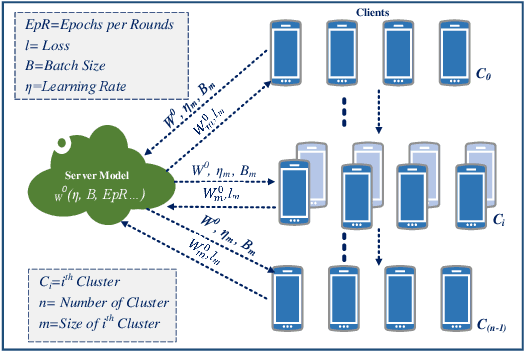
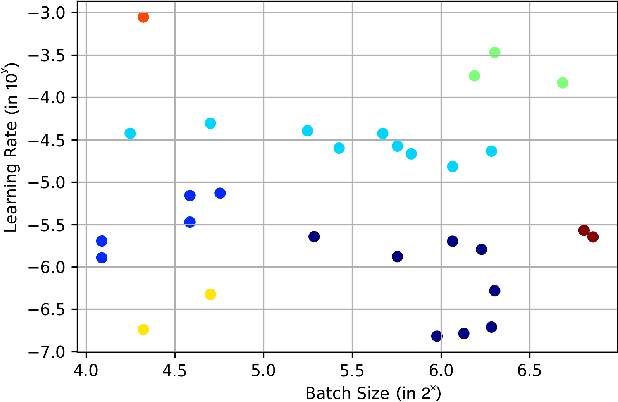
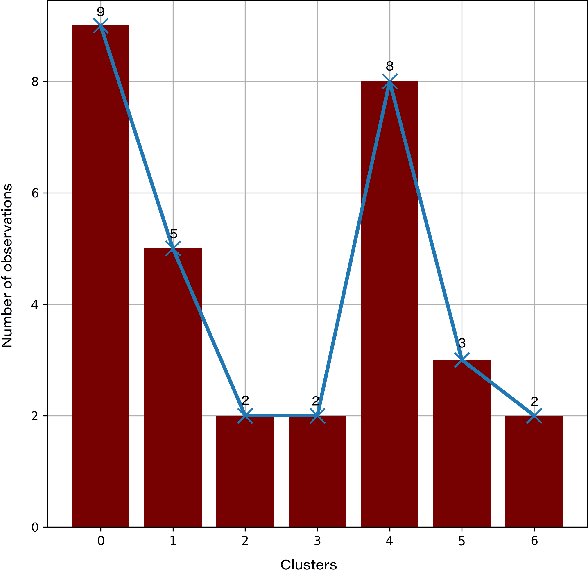
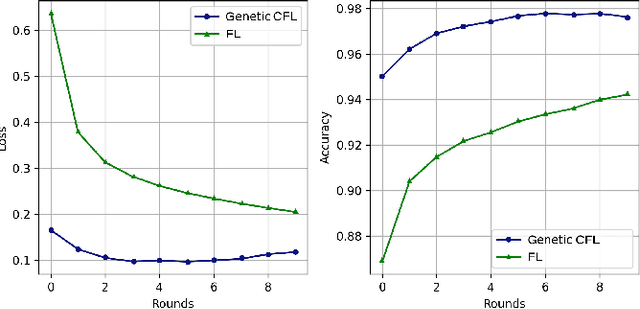
Abstract:Federated learning (FL) is a distributed model for deep learning that integrates client-server architecture, edge computing, and real-time intelligence. FL has the capability of revolutionizing machine learning (ML) but lacks in the practicality of implementation due to technological limitations, communication overhead, non-IID (independent and identically distributed) data, and privacy concerns. Training a ML model over heterogeneous non-IID data highly degrades the convergence rate and performance. The existing traditional and clustered FL algorithms exhibit two main limitations, including inefficient client training and static hyper-parameter utilization. To overcome these limitations, we propose a novel hybrid algorithm, namely genetic clustered FL (Genetic CFL), that clusters edge devices based on the training hyper-parameters and genetically modifies the parameters cluster-wise. Then, we introduce an algorithm that drastically increases the individual cluster accuracy by integrating the density-based clustering and genetic hyper-parameter optimization. The results are bench-marked using MNIST handwritten digit dataset and the CIFAR-10 dataset. The proposed genetic CFL shows significant improvements and works well with realistic cases of non-IID and ambiguous data.
Question-Aware Memory Network for Multi-hop Question Answering in Human-Robot Interaction
Apr 27, 2021
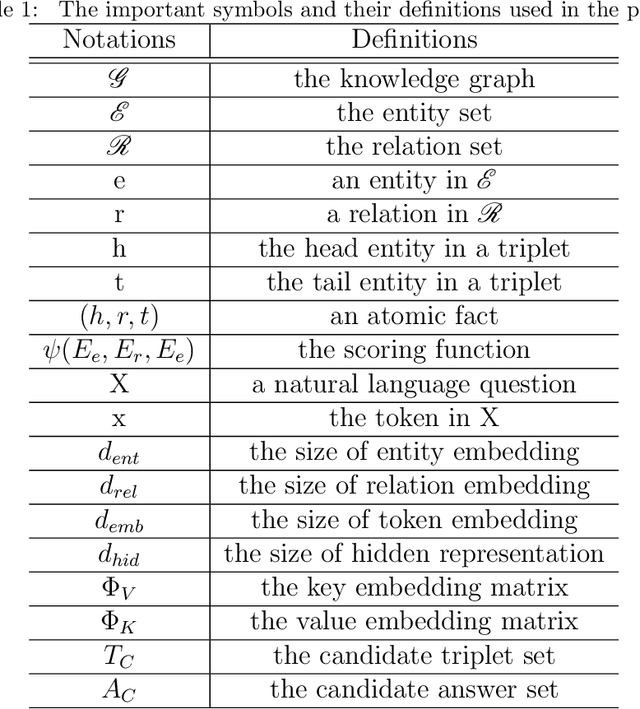


Abstract:Knowledge graph question answering is an important technology in intelligent human-robot interaction, which aims at automatically giving answer to human natural language question with the given knowledge graph. For the multi-relation question with higher variety and complexity, the tokens of the question have different priority for the triples selection in the reasoning steps. Most existing models take the question as a whole and ignore the priority information in it. To solve this problem, we propose question-aware memory network for multi-hop question answering, named QA2MN, to update the attention on question timely in the reasoning process. In addition, we incorporate graph context information into knowledge graph embedding model to increase the ability to represent entities and relations. We use it to initialize the QA2MN model and fine-tune it in the training process. We evaluate QA2MN on PathQuestion and WorldCup2014, two representative datasets for complex multi-hop question answering. The result demonstrates that QA2MN achieves state-of-the-art Hits@1 accuracy on the two datasets, which validates the effectiveness of our model.
Sum-Rate Maximization for UAV-assisted Visible Light Communications using NOMA: Swarm Intelligence meets Machine Learning
Jan 10, 2021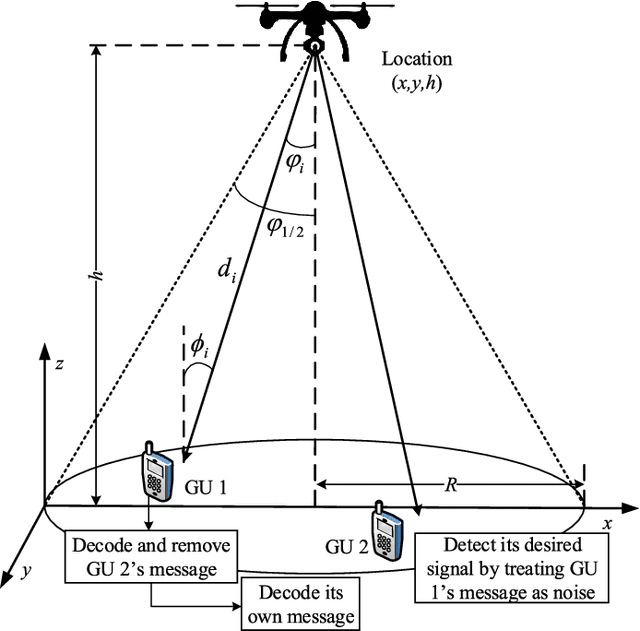
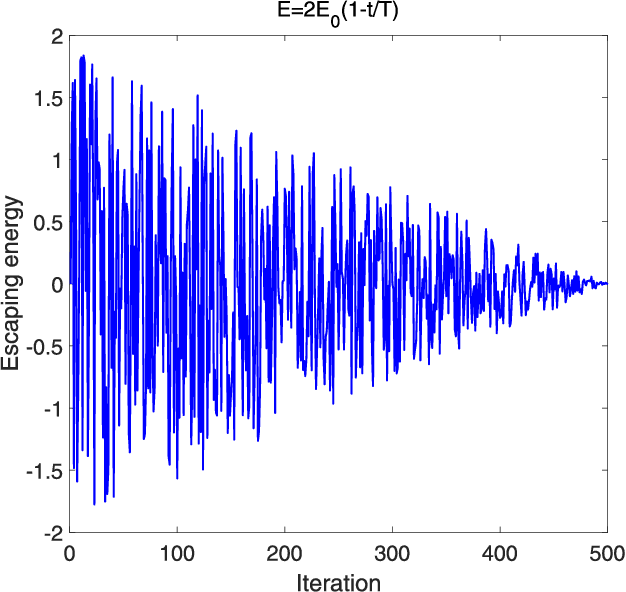
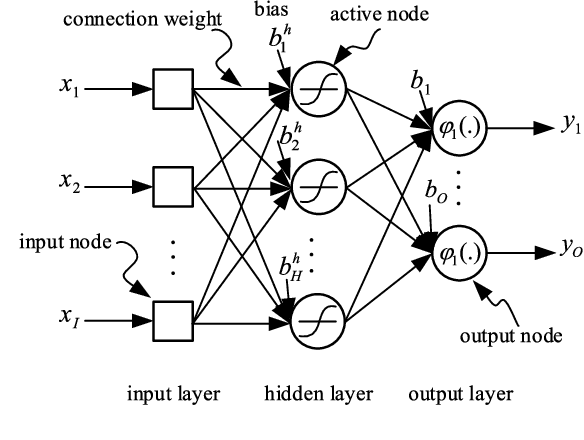
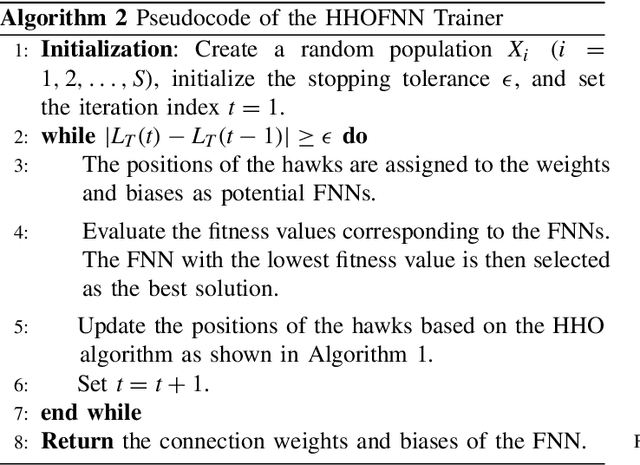
Abstract:As the integration of unmanned aerial vehicles (UAVs) into visible light communications (VLC) can offer many benefits for massive-connectivity applications and services in 5G and beyond, this work considers a UAV-assisted VLC using non-orthogonal multiple-access. More specifically, we formulate a joint problem of power allocation and UAV's placement to maximize the sum rate of all users, subject to constraints on power allocation, quality of service of users, and UAV's position. Since the problem is non-convex and NP-hard in general, it is difficult to be solved optimally. Moreover, the problem is not easy to be solved by conventional approaches, e.g., coordinate descent algorithms, due to channel modeling in VLC. Therefore, we propose using harris hawks optimization (HHO) algorithm to solve the formulated problem and obtain an efficient solution. We then use the HHO algorithm together with artificial neural networks to propose a design which can be used in real-time applications and avoid falling into the "local minima" trap in conventional trainers. Numerical results are provided to verify the effectiveness of the proposed algorithm and further demonstrate that the proposed algorithm/HHO trainer is superior to several alternative schemes and existing metaheuristic algorithms.
 Add to Chrome
Add to Chrome Add to Firefox
Add to Firefox Add to Edge
Add to Edge